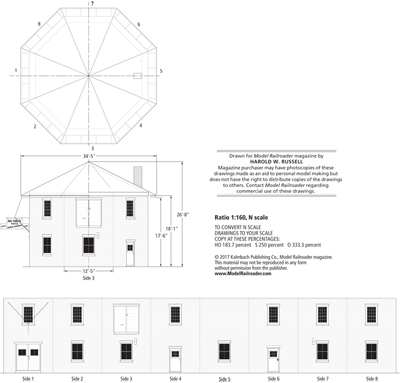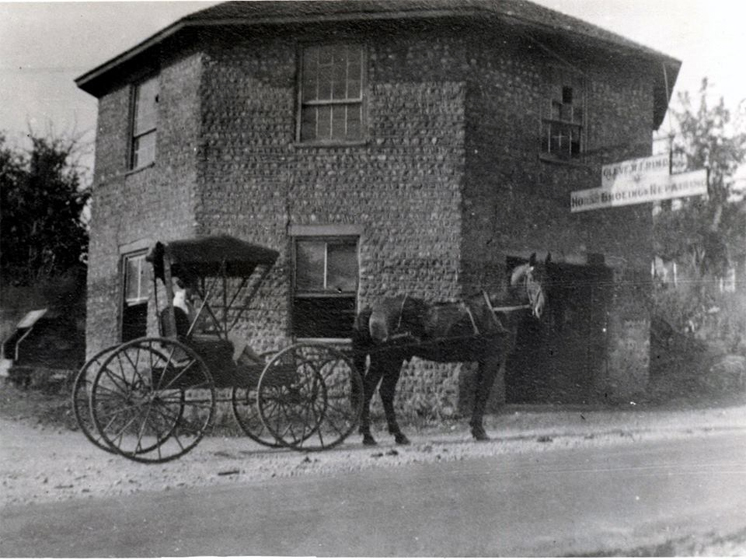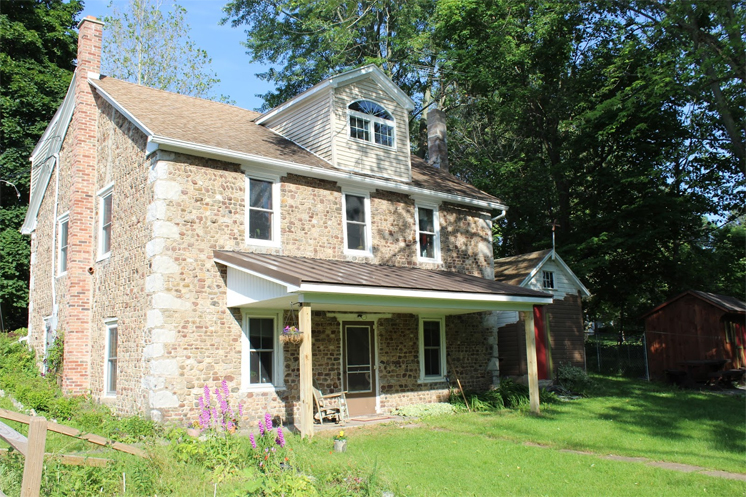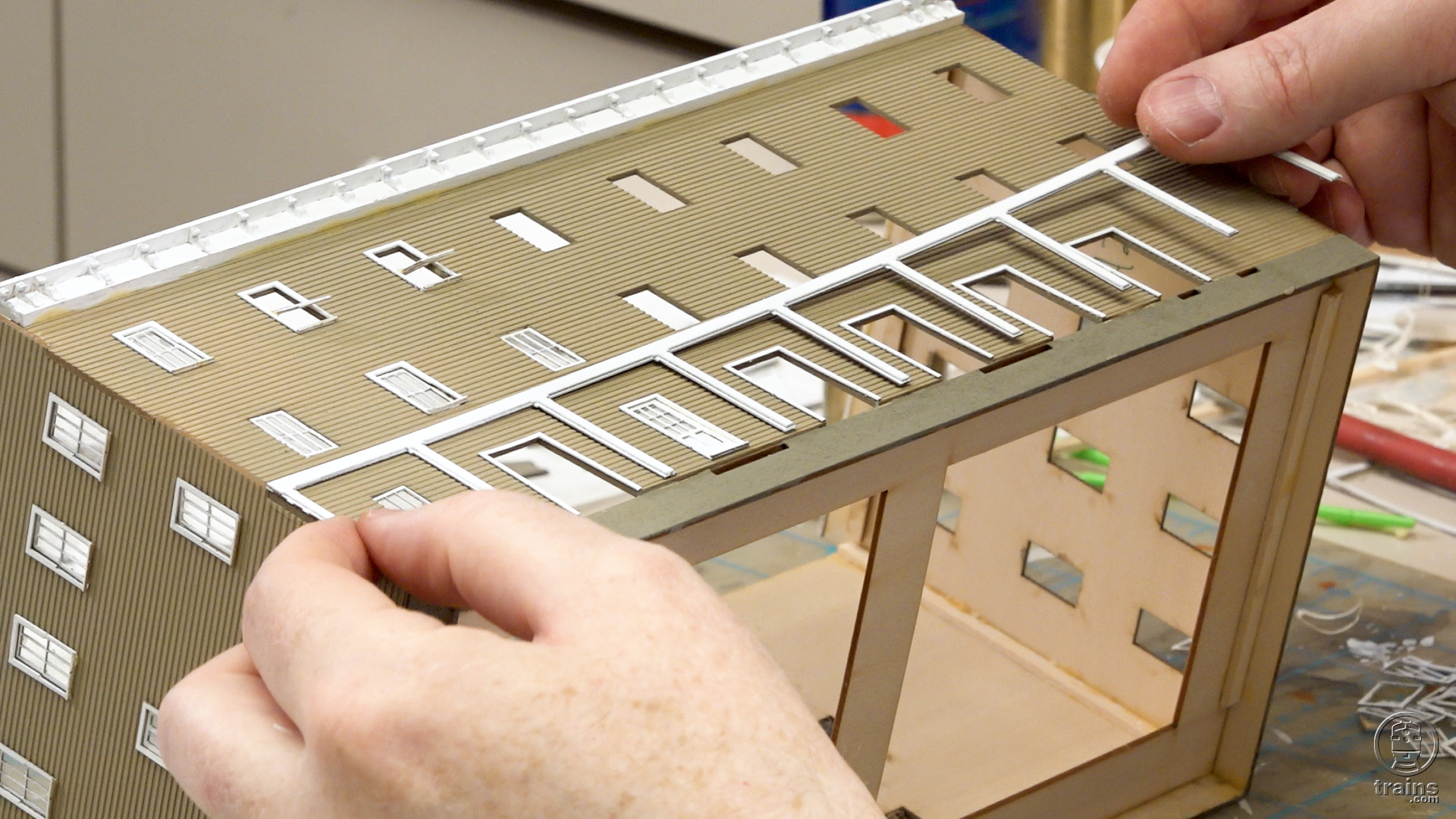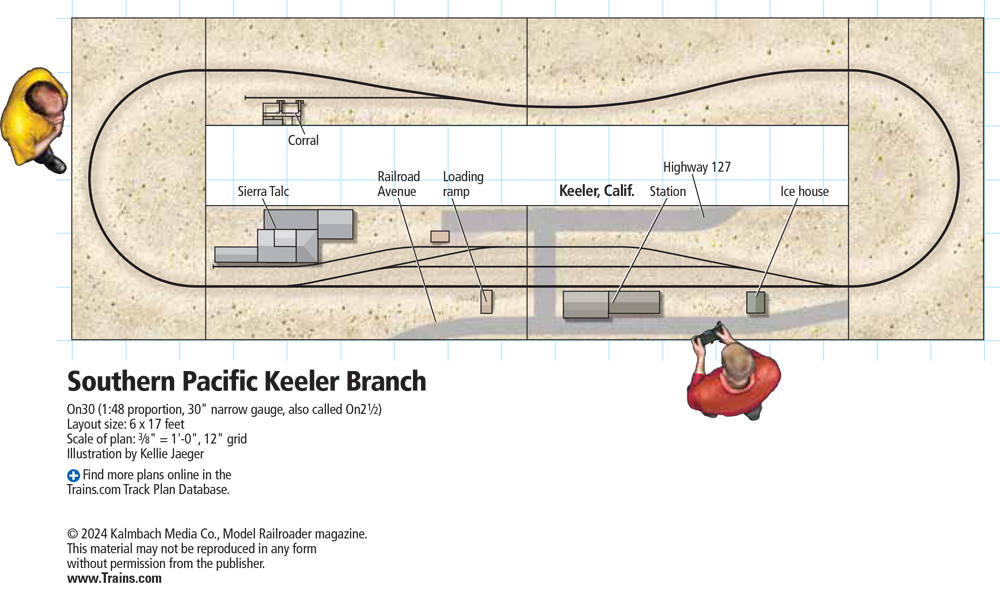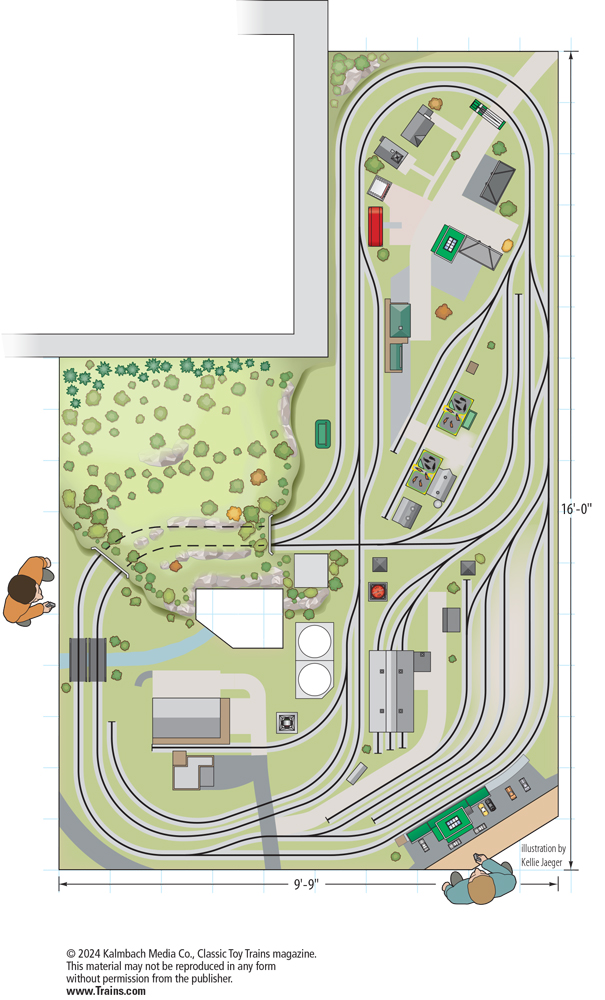Short history of the Alloway blacksmith shop by Richard Palmer
As the early settlers of Lyons began to clear their land, they faced a special problem. The recession of the glacier that covered much of New York State in prehistoric times, left small, round stones, known as cobbles, covering the farmland. These stones had to be removed before the fields could be planted with crops. The cobbles were gathered up and used for building and, as a result, Wayne County is the site of one of the most unusual and beautiful kinds of architecture in this country. Lyons has several beautiful cobblestone homes and buildings, but the most unique is the blacksmith shop in Alloway.
In 1832, Alfred Hale built a small two-story, octagonal, cobblestone blacksmith shop on Alloway Road. Each side of the building is 12 1/2 feet long, has walls 24 inches thick and is constructed of fieldstone cobble. The building was used for years as a blacksmith shop, and most recently as a machine shop.
There were many advantages of using cobblestones for a shop of this sort. Cobblestones are very strong and make a solid structure. They are fireproof; a very important consideration in the days before fire departments, and the thick walls kept the building warm in the winter and cool in the summer. The stone buildings required little outside maintenance and needed no paint.
Nearly one hundred seventy five years after its construction, the unique building retains its original charm and is often the subject for photographers and artists. The crack near the door was made when a car lost control and crashed into the building and one can still see the remnants of paint left from when the shop owner lost a election wager and the structure was painted red, white and blue.
Cleveland Frind bought the blacksmith shop, and the cobblestone house across the street, in 1918. The blacksmith shop closed in 1936, after the automobile had replaced horses. The building was then used as a machine shop until around 1960. Cleveland’s son and daughter-in-law, Ralph, and Helen Frind, lived in the cobblestone house across the street from the octagonal structure for many years. Shortly after Ralph passed away in 2008, the house and shop were sold to former Lyons resident Mary LaGasse Tatum.
The blacksmith and his family lived in a cobblestone house across the street from the blacksmith shop which would also make a great model, removing, of course, all the 20th century add-ons, such as the dormer, brick chimney and the porch.





